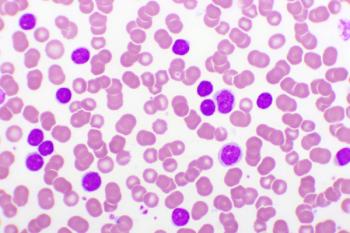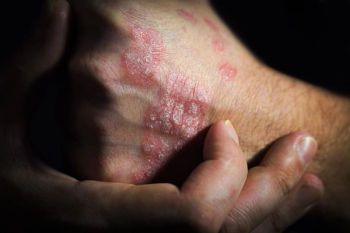
Practical Considerations, Future Outlook for Linvoseltamab in Multiple Myeloma Care: Hans Lee, MD
In part 2, Hans Lee, MD, shares practical tips for using linvoseltamab in heavily pretreated multiple myeloma and outlines trials that may expand its future role.
Following its July 2
Watch
This transcript was lightly edited; captions were auto-generated.
Transcript
What practical considerations should clinicians keep in mind as they begin incorporating linvoseltamab into their treatment approach?
I think there [are] a couple of aspects around this question. I think the first aspect is that as clinicians get prepared to incorporate linvoseltamab in their clinical practice, there is this concept of step-up dosing that's, again, common with all BCMA [B-cell maturation antigen] bispecific antibodies, where a patient may receive a low dose of 5 mg for the first dose, a second intermediate step-up dose of 25 mg 1 week thereafter, and the first target dose of 200 mg on week number 3.
Again, there is a 24-hour hospitalization recommendation after the initial first 2 step-up doses. During this period of time, there is also monitoring for cytokine release syndrome (CRA), potential [immune effector cell–associated neurotoxicity syndrome], and other immune effector cell [adverse] effects.
The risk for CRS is low, so the majority of CRS is really grade 1, which is fever, which is easily manageable, but these are things that clinicians need to be mindful of when initially dosing linvoseltamab.
On the back end, the thing to keep in mind is the potential risk for infections. Like other BCMA bispecific antibodies, there are higher rates of infection, perhaps compared with some other standard myeloma therapies. Being very vigilant and proactive about infection mitigation strategies [is necessary].
This would include [intravenous immunoglobulin], for instance, as primary prophylaxis to mitigate the risk of infection. To keep the [immunoglobin G] levels more than 400, infection prophylaxis with valacyclovir [or] acyclovir for shingles prophylaxis or [varicella-zoster virus] prophylaxis, as well as [Pneumocystis jirovecii pneumonia] prophylaxis, is mandatory for patients receiving this drug.
Looking ahead, what role do you see linvoseltamab playing in the multiple myeloma treatment landscape, whether in earlier lines of therapy, as part of combination strategies, or beyond?
Linvoseltamab is being studied in multiple settings in multiple myeloma through various clinical trials. Probably most importantly, the LINKER-MM3 (
Linvoseltamab is also being studied, for instance, in newly diagnosed myeloma. The LINKER-MM4 (
Also, linvoseltamab is being studied in combination as well. In myeloma, we often combine active drugs with other active drugs. The LINKER-MM2 (
It's safe to combine linvoseltamab with these agents, and early efficacy is also being demonstrated as well. Again, there are a lot of clinical trials combining linvoseltamab in multiple settings in multiple myeloma, and I think this will be very important in the coming years to see these results.
Newsletter
Stay ahead of policy, cost, and value—subscribe to AJMC for expert insights at the intersection of clinical care and health economics.









































